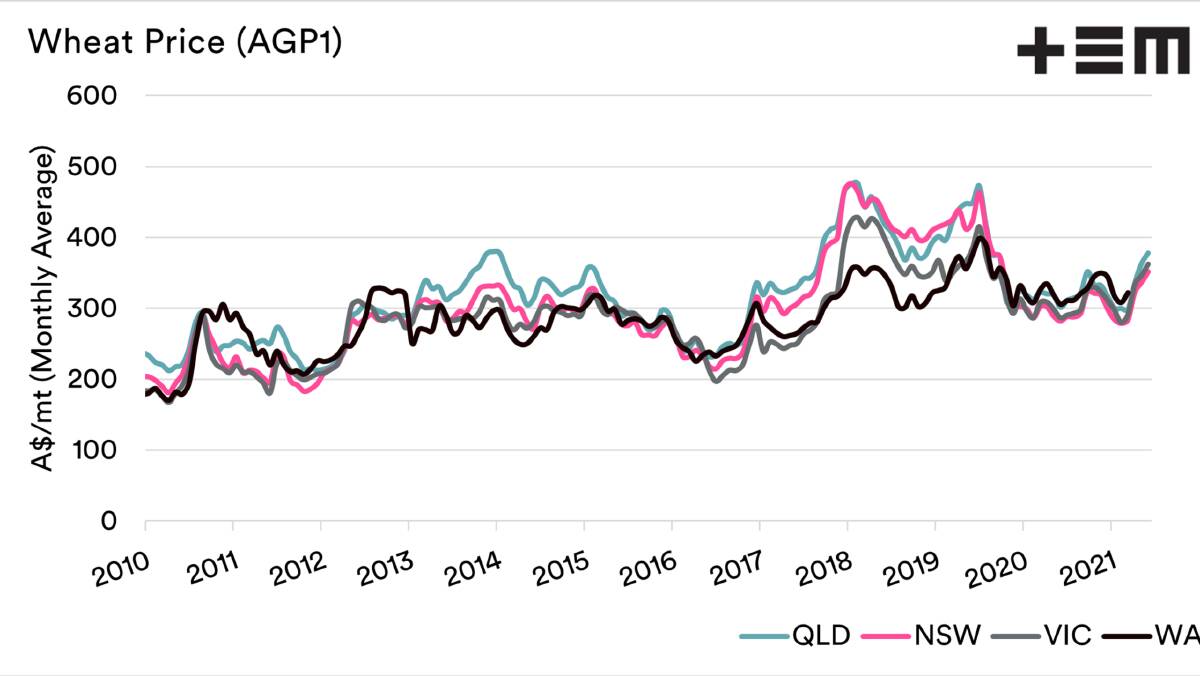
RIGHT through this year, and most of last, we have been talking about the discount that Australian wheat is facing versus the rest of the world.
Subscribe now for unlimited access to all our agricultural news
across the nation
or signup to continue reading
As we start approaching the middle of the year, we thought it was time to revisit how we compare.
I have chosen to look at AGP1 for this analysis, as we have a long series of data, and a large proportion of the crop was downgraded this season.
Let's take a look at Chart 1.
It shows the monthly average price of AGP1 from 2010 to the present.
The prices being paid at the moment are not too shabby, in fact, they are considerably higher than the average for the period (forget about inflation).
So in theory pricing is good?

In markets, it is always important to think about relative value.
How does our price compare to the other indicators?
The charts show our basis between AGP1 and Chicago Board of Trade wheat since 2005, on a monthly and annual basis.
In chart 2 we can see the discount for our lower grade wheat has dropped to significant levels against Chicago wheat compared to what we have seen in the past.
There are reasons for this, which we have covered loads of times over the past months, including logistics and quality.
However, even when we had poor quality in previous years, we never saw discounting at this level.
This year, it is what it is.

Basis has dropped and is generally staying low, despite the massive rises in grain values overseas.
Chart 3 shows the difference in price between the current basis levels, and the average basis level from 2010 to 2017.
I used this period instead of the past decade to remove the higher basis levels caused by the recent drought levels.
If basis levels were at average levels, we would be pricing at a significantly higher level than the present.
READ MORE:
This chart is hypothetical and should be taken with a pinch of salt.
Still, even if the basis were to move to parity instead of the typical premium, we would see a strong increase in farmer returns.
The big question (hope) is whether basis levels in Australia will rise for the new crop.
The discount for the new season remains at extreme levels, with most at over $100 per tonne discount.
In summary, when we look at pricing, our price received is strong, historically speaking, but relative to the overseas values, it is poor.

